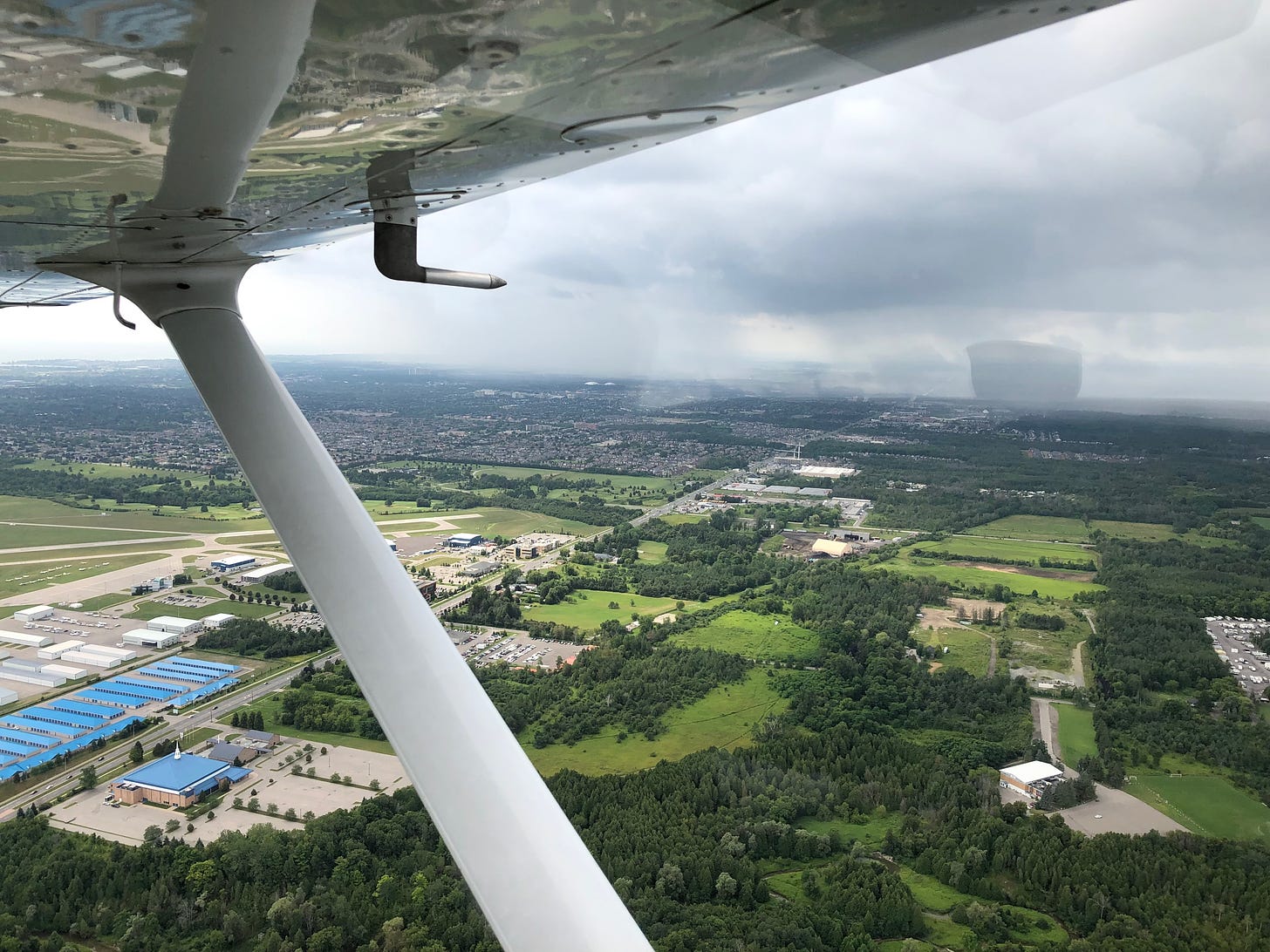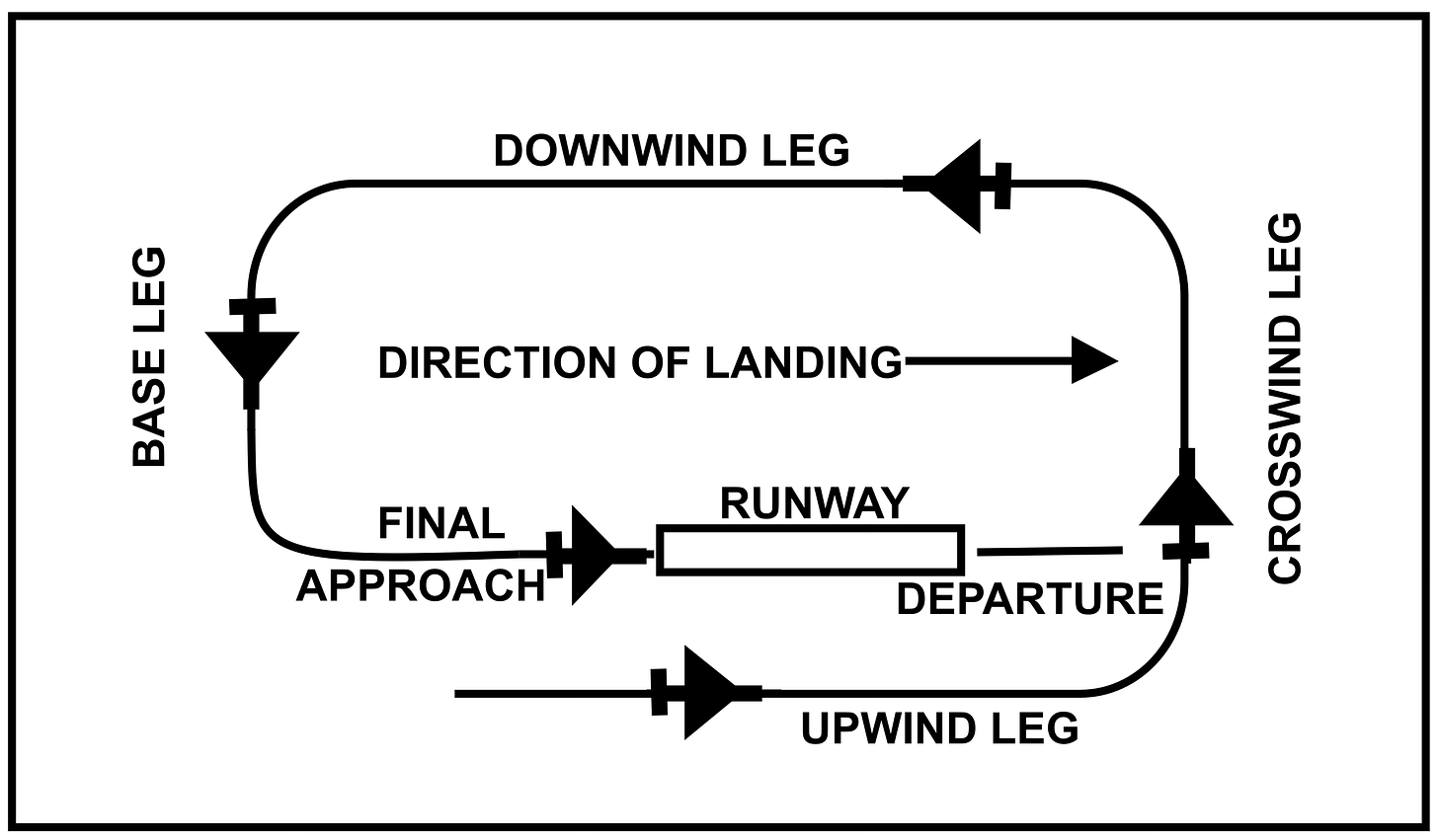Flying the edge of possible in a Cessna 172
How a problematic flight behind the controls of an aircraft revealed the enduring lesson of aviation that we all can reflect on.
Analogous Insights is a perpetual series that showcases learnings from the greatest human achievement of humankind - aviation - to make us and our world better. Whether you are an entrepreneur, brain surgeon or parent, there is much to learn. Written by a pilot and an aviation expert.
Welcome to the sky
I had only been flying solo for a month when every shaky and untested skill I had learned as a student pilot was put into use.
On this day, as I reached VR speed on the runway and rotated my flight school’s Cessna 172 towards the sky, the wheels left the ground and I began to take flight over top of a developed city below.
“Welcome to the sky,” I thought to myself, reflecting momentarily on the marvel of flight, and the privilege that it was to be able to fly.
But today, as I turned crosswind 500 feet above the ground, and in the direction that ATC cleared me to remain in the traffic pattern around the airport, I knew something wasn’t right: visibility was much lower than I was used to.
Much lower.

Instantly wanting to be back on the ground
As I made my initial turn, it was clear that the conditions 500 feet up were not as reported. I only had a few hundred feet of visibility. I usually had unlimited visibility, or as they demarcate in weather briefings, “P6SM” (6+ statue miles of visibility, or 10km). As a student pilot I was not allowed to fly in reduced visibility, nor was I comfortable in it.
Instantly I wanted to be back on the ground. But I needed to keep the aircraft moving at around 100 km/h or it would stall and fall from the sky. As pilots in the industry say, I had to keep flying the plane.
Taking off is optional, landing is mandatory.

To remain in the traffic pattern I had to make another right turn at 1000 feet AGL (above ground level) to enter the leg known as downwind. While I still had some visibility, including of the ground, I was starting to lose the airport from my view - a critical sight to keep to ensure that I didn’t fly outside of procedure.
As the airport kept creeping back into the denseness of the fog like a bear retreating into the woods, I kept trying to position myself closer and closer to the airport. I was able to faintly see the contrast between the runway and the surrounding grass, but momentarily would lose sight of even that.
I messaged ATC to reaffirm the traffic around me: there were two other aircraft close by in the circuit. I was not alone. This simultaneously brought both some relief and added concern.
The next few minutes would take everything out of me, and push me well beyond the skills of a student pilot.
Between communicating with ATC, completing my systems checks, monitoring my airspeed, configuring the aircraft, trying to keep the airport in view, my workload was immense. Minutes felt like seconds, seconds felt like hours.
From bad to worse, from concerning to a close call
As I went to turn base, the second final leg of the traffic circuit before turning onto final approach, ATC messaged to say that they no longer had a visual on me from the tower. I was in low visibility conditions without even ATC able to help me navigate.
My concerns kept coming back to the other aircraft in the circuit.
In the back of my head were the hundreds of air crash investigations that I had studied. They were ringing louder and louder. Many of them document that the circuit around the airport is the most likely place for a mid-air.
A “mid-air” - pilot language for two planes colliding while in the air. While rare, it is perhaps the worst of all aircraft accidents because most times the occupants are alive from air impact to ground impact without any hope.
From earlier conversations I knew there was another aircraft on a long multi-kilometer final approach, essentially flying a long path down to the runway, whereas I was turning into final approach from the circuit. The risk for a conflict was higher than normal as a result. ATC communicated this to both of us - but I couldn’t see them.
As I was about to turn onto final approach to line up with the runway, the other aircraft appeared out of the mass of saturated air. He was about 150 meters away.
Four hundred feet. That sounds like a lot, and perhaps it is in a car. But not in an aircraft where we measure visibility in miles, not feet. He was figuratively close enough to see the whites of his eyes.
I was on his right and slightly lower, which according to the Canadian Aviation Regulations meant that he needed to avoid me. Which he did by taking the evasive maneuver of slowing down and widening out to let me through, a maneuver made riskier given his slow speed in preparation for landing.
It may sound like a scene from Mission Impossible, and while I seek every opportunity to be compared to Tom Cruise, this situation was not the case. It was a controlled and measured situation.
After a nerve-wracking, although uneventful approach and landing, I taxied up to the apron at the flight school. This was only the first few minutes of an hours-long aircraft reservation, but it was enough for me.
I was done.
I was on the ground.
I breathed a sigh of relief.
Usually I would position the aircraft through tight quarters so that the ground crew could easily push the aircraft back into position. But this time my legs were shaking so badly I wasn’t able to make the small inputs required to maneuver the aircraft into place. I shutdown in the open area, and they had to get me a tug.
After I completed the required regulatory reporting requirements for this incident, I had time to reflect on what just happened.
'Once you have tasted flight, you will forever walk the earth with your eyes turned skyward, for there you have been, and there you will always long to return.'
Leonardo da Vinci
I learned what I felt, I felt what I learned
In a matter of five minutes, I had experienced - viscerally felt - something very few humans get to experience: the searing reality of the consequentiality of aviation.
This wasn’t the benign (but sometimes prohibitive) fear of flying that some people experience, this was going head-to-head with Mother Nature, with physics, with the big sky, one-on-one.
It was me vs. the ultimate laws of human existence within which everything else are just recommendations, as Elon Musk puts the relationship between the laws of physics and humanity.
You don’t realize the edge of possible and of innovation that aviation flies along until you are flying it yourself. Without a way out, within the unforgiving forces at play.
My experience didn’t scare me to fly again. It did the opposite. It reinforced my wonderment of the industry and my marveling at how aviation is so prevalent today given the immense risks that it faces. The risks that I just felt and just got to know too well.
We take aviation for granted. The hurdles it has overcome to make it as safe, predictable, and de-risked as it is today makes it nothing short of one of the greatest wonders of the world.
Case in point: each day in the United States nearly three million people travel through the skies. There has been only two fatalities in 14 years on Part 121 scheduled commercial flight.
Billions of passenger trips. Two fatalities.
Aviation is quite possibly the greatest human achievement, with a lot to teach us about including everything from psychology to business to medicine to parenting…to building the next greatest human achievement.
That’s what Analagous Insights is all about.
See you in the next post: how aviation has became humankind’s greatest achievement and lays the foundation to inform the next, while making us better humans, doctors, entrepreneurs, parents and more.


